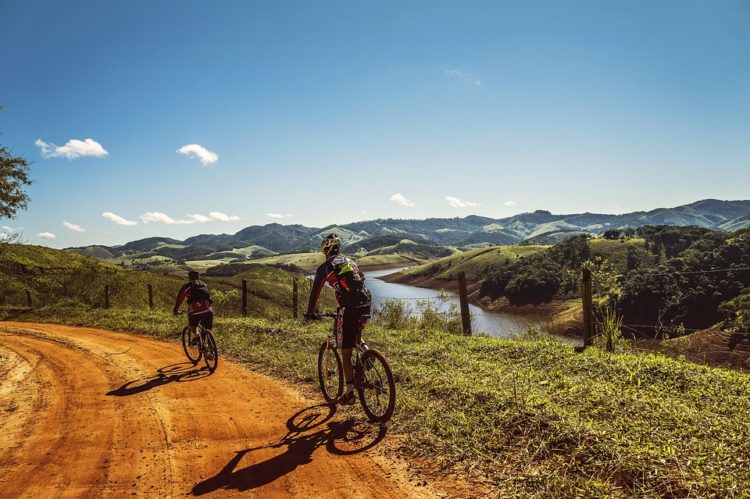For some people, riding a mountain bike on the road is out of place. However, it is quite common in the country. One of the measures that you can take to make the mountain bike suitable for riding on the road is reducing some of the features that make it ideal for off-road use, including suspension, tires, gearing, and position.
A mountain bike has features that enable it to absorb the impact that may result from rocks, roots, and terrain. One of the easiest ways of converting a mountain bike to make it ideal for road use is pumping up its tires to 40 to 50 PSI. The pressure helps the bike to roll quicker and increase the level of comfort when standing up. Also, consider buying 1.5-inch tyres for your mountain bike.
Generally, road tyres can be classified as clincher or tubular tyres. The classification is based on how the tyres are fitted to the rims of mountain bikes. Clincher road tyre designs are the most common in mountain bikes. The tyres have a horseshoe shape. When you inflate the tyres, the horseshoe shape allows the tyre to clinch to the rim.
On the other hand, tubular tyres are mounted on special rims and glue is applied to hold the rims and tyres together. The inner tube of the tyres facilitates the formation of a sealed unit.
Advantages of using Road Tyres on Mountain Bikes
Slick Road Tyres ensure Better Grip
The tires of your mountain bike are vital as they are the only parts that are in contact with the ground. If the forces on your tyres exceed the level of friction between the tyres and the ground, you will lose traction and end up slipping. You can maximize the grip of your mountain bike tyres by maximizing the amount of road contact.
If tyres are made of the same compound, the friction between the tyres of different sizes is the same. However, large bike tyres have large contact patches. As a result, acceleration and braking forces over a large area, reducing the chances of exceeding the friction between the tyres and the ground. Larger bike tyres have better traction due to large contact patch
For slick tyres, the level of traction is high as their contact patches are utilized effectively. Treaded tyres have treads and channels. The features reduce the level of grip as they do not touch the ground. For example, if the road tyres of your mountain bike have 10% tread, it means that the contact patch reduces by 10% as compared to slick road tyres of the same size.
Also, slick tyres tend to have a better grip when the ground is wet as compared to the threaded designs if they are made of the same compounds. The slick designs have better grip due to their large contact patches.
Slick Road Tyres have Lower Rolling Resistance
When treaded tyres are used in a mountain bike, they get deformed over time due to weight and forces acting on them. When you put weight on tyres, they get deformed and lose their original shape. However, their volume remains the same.
The treads on treaded tyres allow warping as tyres spring back with less energy when leaving the road. As a result, the tyres lose their efficiency to rolling resistance. The rate of deformation in slick tyres is low as they do not have treads. Therefore, the tyres have less rolling resistance.
Choosing the Right Road Tyre Tread for your Mountain Bike
Some people may have a hard time when choosing the right tread profile for their mountain bike road tyres. The choice of the tread profiles will vary depending on the type of roads in your area and the conditions that you ride in. The right tread profile for your tyres when riding on smooth roads is different from the recommended tread profile when riding on gravel roads.
The Right Pressure for your Road Tyres
In most cases, tyre manufacturers indicate the recommended pressure on the side of their tyres. The minimum pressure is the amount that can support a riders weight. Exceeding the maximum limit can result in tyre damage. The right pressure will depend on a riders weight and the conditions that they are riding in. A lower tyre pressure when riding on wet surfaces helps to improve the grip.
